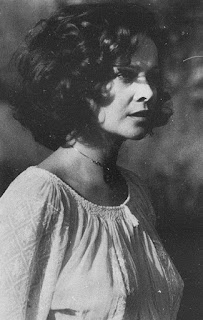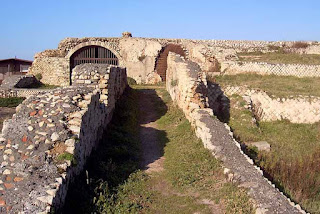Maria Bricca - war hero
Humble cook whose actions helped end siege of Turin in 1706
The unlikely war hero Maria Bricca, whose actions would precipitate a major victory for the Duchy of Savoy in the War of the Spanish Succession, was born on this day in 1684 in Pianezza, then a village about 12km (7 miles) northwest of the city of Turin. Maria, who was born Maria Chiaberge but changed her name after she married Valentino Bricco in 1705, became an important figure in the ending of the four-month siege of Turin by the French in 1706. She hated the French, who had sacked Pianezza in 1693 when she was just eight years old, killing villagers and looting property before her eyes. In 1706. when they took control of the castle at Pianezza, which occupied a strategic position overlooking the Dora Riparia river, it brought back memories of the scenes she had witnessed as a child. When Maria, who was nicknamed La Bricassa, heard that Prince Eugene of Savoy had dispatched a force of 9,000 Prussian soldiers led by his ally, Prince Leopold of Anhalt-Dessau, to try to take control of the castle, she knew she had information that could help them. As a cook, she had previously worked at the castle and knew of the existence of a secret underground passage that led from the village - possibly from her own house - directly into the castle. Read more…
___________________________________________________________________
Gianni Versace – designer
Meteoric rise of the talented son of a dressmaker
Gianni Versace, the founder of the international fashion house, Versace, was born on this day in 1946 in Reggio di Calabria in the south of Italy. He went on to start a highly successful clothing label and also designed costumes for the theatre and films. He was a personal friend of the late Princess Diana and numerous celebrities, including Elton John and Madonna. Christened Giovanni Maria Versace, the designer literally learnt his trade at his mother’s knee as she was herself a dressmaker and employed him as an apprentice in her business from an early age. He moved north to Milan to work in the fashion industry for other designers and, after presenting his own first signature collection in the city, opened a boutique in Via della Spiga in 1978. His career immediately took off and his exclusive designs were highly sought after. He became one of the top designers of the 1980s and 90s and employed his brother, Santo, and his sister, Donatella, in his successful and profitable business. One of his most famous creations was a black dress held together by safety pins, worn by the actress, Elizabeth Hurley, to a film premiere. Read more…
_________________________________________________________________
Paolo Tosti – composer
How a poor boy from Abruzzo became an English knight
Paolo Tosti, the composer of the popular Neapolitan song, Marechiare, died on this day in 1916 in Rome. Many of the light, sentimental songs he composed were performed by the top opera singers of the time and are still regularly recorded by the stars of today. At the height of his career, Tosti was singing professor to Princess Margherita of Savoy, who later became the Queen of Italy. He then went to live in England, where his popularity grew even more. He was appointed singing master to the British Royal Family and was eventually knighted by King Edward VII, who had become one of his personal friends. Born Francesco Paolo Tosti in Ortona in the Abruzzo region, the composer received an early musical education in his home town and then moved on to study at the Naples Conservatory. His teachers there were so impressed with him that they appointed him a student teacher, which earned him a small salary. Ill health forced Tosti to return to Ortona, but while he was confined to bed, he began composing songs. Once he had recovered from his illness he moved to live in Ancona where, it is said, he was so impoverished that he had to exist on stale bread and oranges. Read more…
_________________________________________________________________
Roberto Capucci - fashion designer
'Sculptor in cloth' who rejected ready-to-wear
The fashion designer Roberto Capucci, whose clothes were famous for their strikingly voluminous, geometric shapes and use of unusual materials, was born on this day in 1930 in Rome. Precociously talented, Capucci opened his first studio in Rome at the age of 19 and by his mid-20s was regarded as the best designer in Italy, particularly admired by Christian Dior, the rising star of French haute-couture. It was during this period, towards the end of the 1950s, that Capucci revolutionised fashion by inventing the Linea a Scatola – the box-line or box look – in which he created angular shapes for dresses and introduced the concept of volume and architectural elements of design into clothing, so that his dresses, which often featured enormous quantities of material, were almost like sculpted pieces of modern art, to be not so much worn as occupied by the wearer. Growing up in Rome, Capucci was artistically inclined from an early age. He attended the Accademia di Belle Arti di Roma and wanted to become either an architect or a film director, designing clothes initially as no more than a diversion. Read more…
Home



























